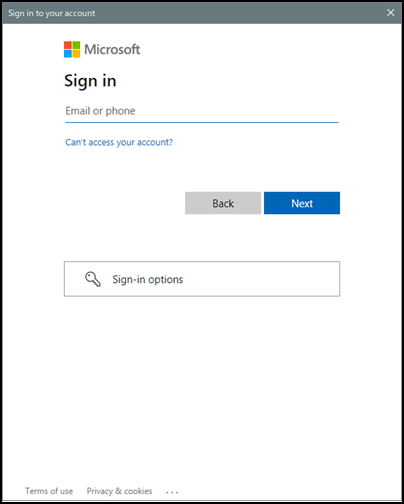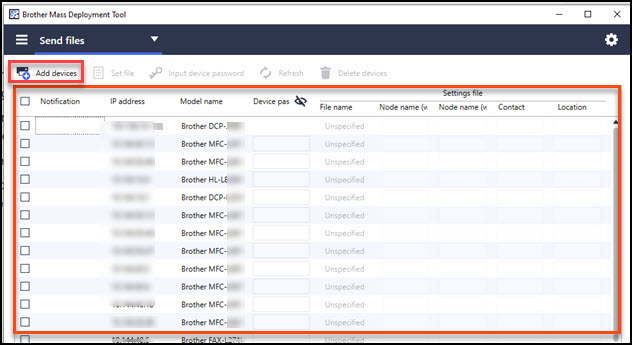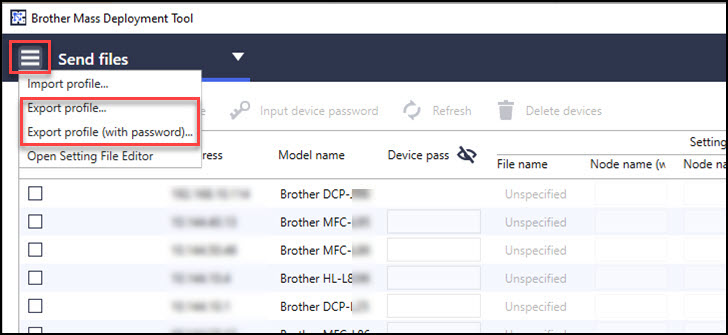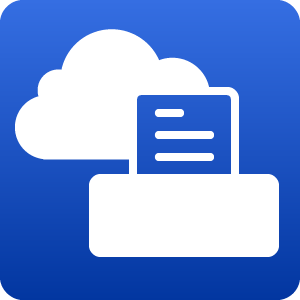- Brother support website
- Brother Support for IT Administrators
- I want to apply Microsoft Universal Print settings to my entire printer fleet using a single file.
I want to apply Microsoft Universal Print settings to my entire printer fleet using a single file.
Use the Mass Deployment Tool to set up Microsoft Universal Print settings in a batch using a CSV file that contains multiple device profiles.
NOTE:
Before you begin:
Download and install the Mass Deployment Tool to get the UniversalPrintTokenGenerator.exe file (required to obtain a token ETKN file).
Create a Microsoft Azure account (for device management authorization).
Make sure all devices are connected to the Internet.
Obtain a token (ETKN file) from Microsoft's server using UniversalPrintTokenGenerator and your administrator Azure ID / Password.
-
Go to your product's Downloads page on the Brother support website and download the Mass Deployment Tool (Windows only).
-
Extract the downloaded file into the folder you want.
-
Click Start > (All apps) > Windows Tools > Command Prompt.
-
Run the UniversalPrintTokenGenerator.exe command as follows:
UniversalPrintTokenGenerator.exe --output"C:\directory\token.etkn" --filepass tokenpassword --signout The command prompt shows the result after executing the command.NOTE:
" --signout" is an optional command that allows you to sign out after running the command.

This screen appears when you execute the command. Follow the instructions and type the device administrator's Azure ID into the ID / Password dialog box to sign in to Microsoft Azure.

Make sure the encrypted ETKN file is saved in the folder specified by the "--output" command.
NOTE:
Tokens are active for 60 minutes. To learn how to change the expiry time of tokens, visit the Microsoft website.
Send Microsoft Universal Print registration instructions to each device via MDT using the administrator’s token (ETKN file).
Generate the CSV file containing the device profiles you want to configure and execute the configuration.
Double-click MassDeploymentTool.exe (in the MassDeploymentTool folder) in your Mass Deployment Tool folder.
Click
 (Add devices) and select the devices you want from the list.
(Add devices) and select the devices you want from the list.
Click
 and select Export profile… or Export profile (with password)...
and select Export profile… or Export profile (with password)... 
NOTE:
If you select Export Profile... and any of the target devices are password-protected, MDT notifies you that the original profile will not be encrypted when saved.
If you see this message, click OK to continue or click Cancel to go back and select Export profile (with password)...Select the destination folder, type the file name, and then click the Save button. MDT exports the file and saves it in a CSV format.
Navigate to the destination folder and open the CSV file.
For each device, type the file path for the token in the File Path column and the token password in the Package Password column (see Step 6).

NOTE:
The File Path and Package Password can be found in the token (ETKN file), which is written to a CSV file profile containing multiple devices' information.
Save the CSV file.
Click Start > (All apps) > Windows Tools > Command Prompt.
To apply the settings to the device, run the MDT command stored in the "SettingCommand" folder as follows:
settingcmd.exe [verb-command] [--sub_options]
Example:
settingcmd.exe applyup --profile "C:\directory\profile.csv" --result "C:\directory\result.csv"The required commands are as follows. For other commands and options, see the Mass Deployment Tool User's Guide.
--profile Specify the deployment profile's file path.
The devices in the file are network connection only.--result Specify the path for saving the executing result. -
When configuration is complete, the resulting CSV file is generated to the location you specified using the
"--result" command. Confirm the result of each device.

